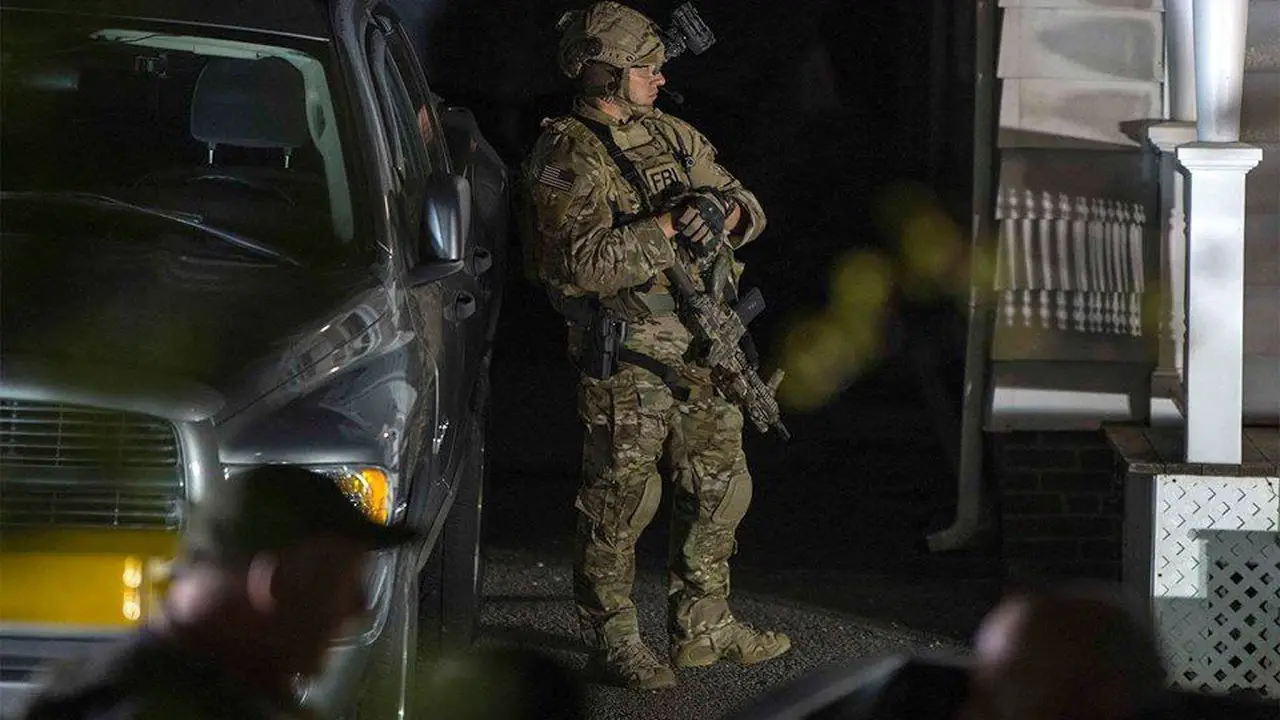The FBI Hostage Rescue Team (FBI HRT) is the counter-terrorism and hostage rescue unit of the US Federal Bureau of Investigation. The HRT is trained to rescue American citizens and allies who are held hostage by hostile forces, usually terrorists and/or criminals.
It’s part of the Tactical Support Branch of the FBI’s Critical Incident Response Group (CIRG) and is based at the FBI Academy at the Quantico Marine Corps Base, in Stafford County, Virginia.
CAPABILITIES
The HRT’s equipment and tactics are the most advanced of the FBI’s 56 SWAT teams and the 14 enhanced SWAT teams. The HRT’s capabilities are distinguished because the HRT operators (assault and sniper teams) serve full-time and train daily.
The HRT has the ability to deploy within four hours, with part or all of its personnel and resources, to any location within the United States or its territories. The unit is able to operate in a variety of environments (chemical, extreme cold, night and low-light, or rural environments). The HRT’s tactical teams have the ability to fast-rope, a technique in which the team rapidly descends a rope from the side of a helicopter. This technique is useful for deploying troops into an area where a helicopter cannot touch down. Even more advanced capabilities are possessed by the HRT, including High Altitude Low Opening (HALO) parachute operations, to name just one. The HRT’s capabilities include advanced ground tactics, advanced maritime operations, and advanced tactical aviation operations.
The HRT as a whole possesses enhanced capabilities in the maritime domain, including advanced breaching capabilities and ship-boarding capabilities. The HRT has vessels that are outfitted for maritime assaults, most of which have been upgraded since 2004.
HRT also has a specialized maritime team with additional maritime capabilities including subsurface diving, closed-circuit diving and combat swimming. All operators on the maritime team are military trained in closed-circuit diving and combat swimming. In addition, an operator of the maritime team assault element is qualified to pilot and operate a freighter.
The HRT’s Tactical Aviation Unit is staffed by FBI special agents. The Tactical Helicopter Unit, a sub-unit of the Tactical Aviation Unit, contains a variety of specially modified helicopters. These helicopters include military converted Sikorsky UH-60 Black Hawk tactical transport helicopters and tactically enhanced Bell 412 and Bell 407 helicopters. The HRT’s tactical aviators are required to fly daily.
SELECTION & TRAINING
Prospective HRT operators are selected based upon their background and experience, as well as their demonstrated performance during the HRT selection course. The rigorous two-week selection process includes long-distance runs, forced marches, obstacle courses, and other tests of physical and mental stamina. Throughout the entire selection process, candidates are evaluated on their ability to think under pressure and to perform while physically exhausted. After a six-month initial training period, they are headquartered at the FBI Academy in Quantico. Experienced HRT operators assigned to observer/sniper teams are sent to the United States Marine Corps Scout Sniper Basic Course.
After successfully completing the course, they receive further instruction from HRT snipers. Maritime platoon operators are sent to a variety of maritime special operations courses, including Phase II of U.S. Navy BUD/S at Naval Amphibious Base, Coronado, California.
When not operationally deployed, the HRT conducts full-time training for its members at various sites across the country. Two to three hours each day are set aside for physical training, a defensive tactics session, and combative training. One day a week is devoted to maintaining either perishable skills or specialized skills, such as: maritime operations, helicopter operations, parachuting, WMD training and cold weather operations. Three days are spent honing sniping or close quarters combat skills on the various training ranges available to the team.
Three teams rotate through three 120-day cycles: training, operations, and support. During the training cycle, the team refreshes its skills and takes part in exercises, attends other courses, or trains with foreign and domestic units. During the operations cycle, the team is available for deployment.
The HRT is known to conduct joint training exercises and participate in exchange programs with US military units such as the US Army’s Delta Force or the U.S. Navy’s DEVGRU. The HRT routinely trains with other federal tactical teams such as the DEA’s FAST Team, the United States Border Patrol’s BORTAC unit or the United States Capitol Police’s CERT. Occasionally the HRT trains with French GIGN, British SAS and Special Boat Service, Irish ERU, the Australian SAS, German GSG 9, and other international units as well as assist in the formation of corresponding units within the NATO framework.

















